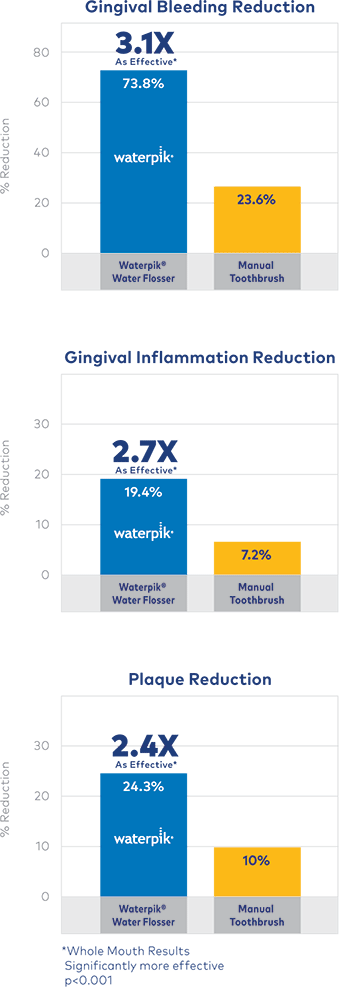Effectiveness of a Water Flosser Compared to a Manual Toothbrush on Clinical Signs of Inflammation: A Randomised Controlled Trial
Objective
To determine the effectiveness of using a Waterpik Water Flosser in reducing clinical signs of inflammation compared to manual toothbrushing alone.
Methodology
Seventy-two subjects were randomised equally into two groups in this four-week, parallel clinical trial:
-
Group 1: ADA standard manual toothbrush plus Waterpik Water Flosser (WF).
-
Group 2: ADA standard manual toothbrush only (MT).
Inflammation was measured using Bleeding on Probing (BOP) and the Modified Gingival Index (MGI) at baseline, two weeks, and four weeks. Plaque accumulation was evaluated using the Rustogi Modified Navy Plaque Index (RMNPI) at the same intervals.
Both groups brushed as usual with the toothpaste provided.
Results
Both groups showed significant reductions in BOP, MGI, and RMNPI after four weeks (p<0.001, except marginal RMNPI for MT p=0.006).
However, the WF group achieved significantly greater improvements across all clinical measures:
-
3.1× improvement in BOP
-
2.7× improvement in MGI
-
2.4× improvement in plaque reduction
Conclusion
Using a Waterpik Water Flosser in combination with a manual toothbrush is significantly more effective than brushing alone at reducing inflammation and plaque, leading to improved overall gingival health.
